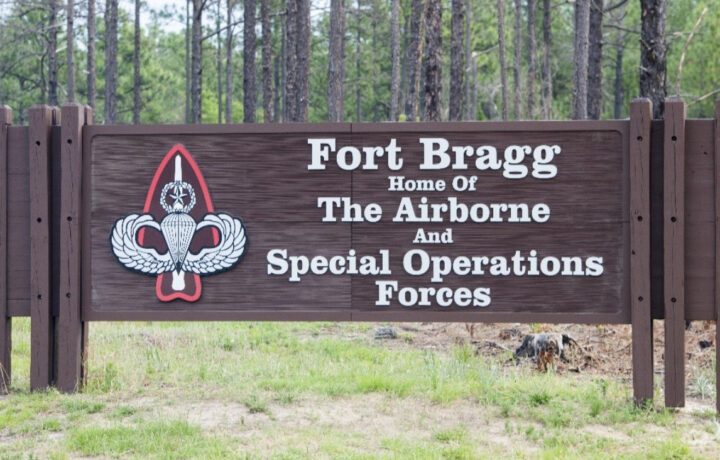Less than two weeks after it was announced that the United States Space Command would be relocated from Colorado Springs, CO, to Huntsville, AL, the United States Army confirmed that two of its commands will be relocated from Texas to North Carolina.
Army North and Army South, currently based at Fort Sam Houston outside of San Antonio, will merge with Force Command (FORSCOM) at Fort Bragg, N.C., to create the Western Hemisphere Command. It will be stood up before the end of the year, Army Chief of Staff Gen. Randy George confirmed at last week’s Association of the United States Army (AUSA) 2025 annual meeting in Washington, D.C.
“Our Army has gotten smaller, and we have grown our headquarters. I mean, so we have to reduce the headquarters, and I think we can become more efficient,” George explained.
It follows the consolidation of the U.S. Army Futures Command with the Training and Doctrine Command (TRADOC), which was merged into the Transformation and Training Command (T2COM).
The general added that within the next “six to eight weeks, we are looking to do the same thing with Western Hemispheres Command, where we will actually have down at Fort Bragg, will be that four-star headquarters that is responsible for the Western Hemisphere, and Army North and Army South will merge into that headquarters as well, to make sure that we are condensing headquarters.
Western Hemisphere Command Goes East
The new Western Hemisphere Command will focus on homeland defense and partnerships with America’s allies in the Western Hemisphere, the Army had first announced in April. Reducing the number of headquarters is an effort towards the efficiency suggested by George.
“We started by saying that we were going to downsize our own [headquarters] by 1,000 people,” Gen. George added. “Instead of passing all the people [and] product around, I have been able, in my own office, to look at a smart board and make decisions, not ask for info papers [to] understand what’s happening inside of our formation. So, we need less people to do that.”
The Lone Star State Put Up a Fight
Officials near Fort Sam Houston have said they were caught off guard by the move, which could take with it around 200 jobs in San Antonio. Congressional lawmakers said the full details weren’t provided.
“On the surface, it may not seem as if [the administration] listened,” said U.S. Rep. Tony Gonzales (R-Texas), whose district included San Antonio.
Gonzales had attempted to counter the move by including “San Antonio-specific language” in a defense reauthorization bill. However, it has yet to be taken up by the United States Senate.
Local leaders also expressed frustration over the move, but suggested San Antonio will remain resilient.
“As Army leaders shared with us earlier this summer, they are taking steps to achieve efficiencies to accomplish their mission,” San Antonio Mayor Gina Ortiz Jones said in a statement to local news station KSAT. “While I am disappointed to hear the consolidated headquarters will relocate to North Carolina, Army leaders this summer indicated even this outcome could yield a minimal impact to the overall Army footprint at JBSA [Joint Base San Antonio].”
Jones has said she will work with the Pentagon to “identify additional missions” that could be hosted at Fort Sam Houston and JBSA.
“But there are bigger conversations that are being had as far as the overall direction of the Department of War,” Gonzales added, referencing the alternative name that the Trump administration authorized for the Department of Defense (DoD). “If we’re consolidating in one area, but we’re growing in another, I think that ultimately doesn’t hurt our city.”
Military City, USA
Even though San Antonio is widely known as “Alamo City,” “River City,” and “Mission City” because of its historic ties and local features, it is also known as “Military City, USA” due to its significant military presence. JBSA remains the largest joint base in the DoD, which includes several major installations. Among them are Lackland Air Force Base (AFB), Randolph AFB, and Fort Sam Houston.
The Lone Star State’s second most populous city, after Houston and currently the country’s seventh-largest city, has also had a military connection dating back nearly 300 years.
As of 2020, the United States military supported more than 565,000 personnel who live and work in the surrounding four counties, which also include four Congressional districts.
Commands Out – DHA In?
With the move of North and South Commands a done deal, San Antonio officials are now hoping that the Defense Health Agency, currently headquartered in Falls Church, VA, could be relocated to the Lone Star State.
DHA has about 130,000 employees nationwide, and Texas lawmakers have pushed to see San Antonio serve as its future HQ. Rep. Gonzales has led the efforts, along with Senator John Cornyn (R-Texas).
The city and each of the four counties have already set aside $10 million to fund the renovation of a Fort Sam Houston building for DHA.
“This one grant that we’re applying for is important in the larger conversation about how we think about strengthening the defense ecosystem, building the pipeline of talent recruiting companies here, and also strengthening the very the ties that are so unique to [our region],” Mayor Jones told the San Antonio Report.
She also noted that the city recently saw the merger between the University of Texas at San Antonio and the University of Texas Health Science Center, making it the third-largest research university in Texas and the second-largest in the UT System, after UT Austin.




